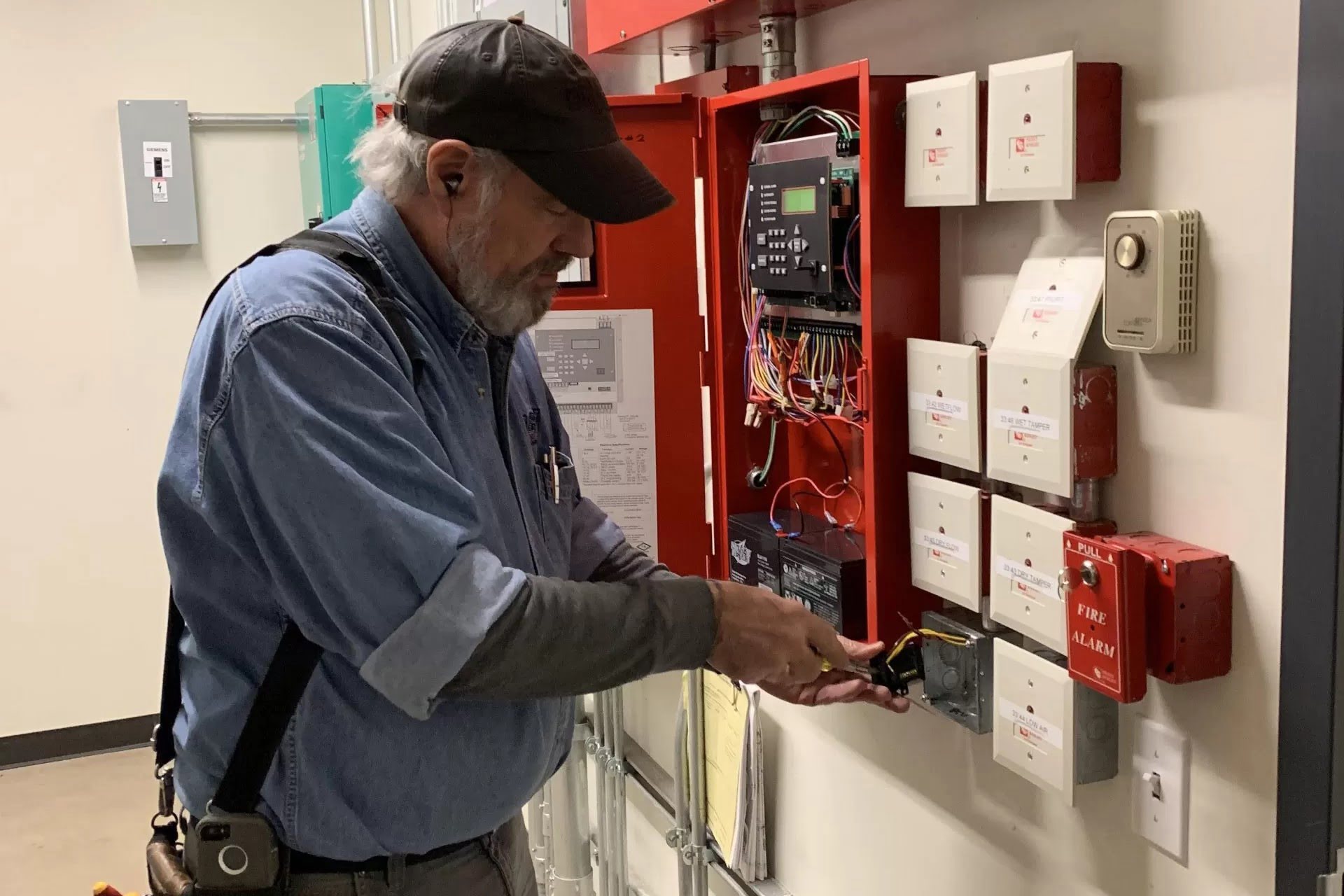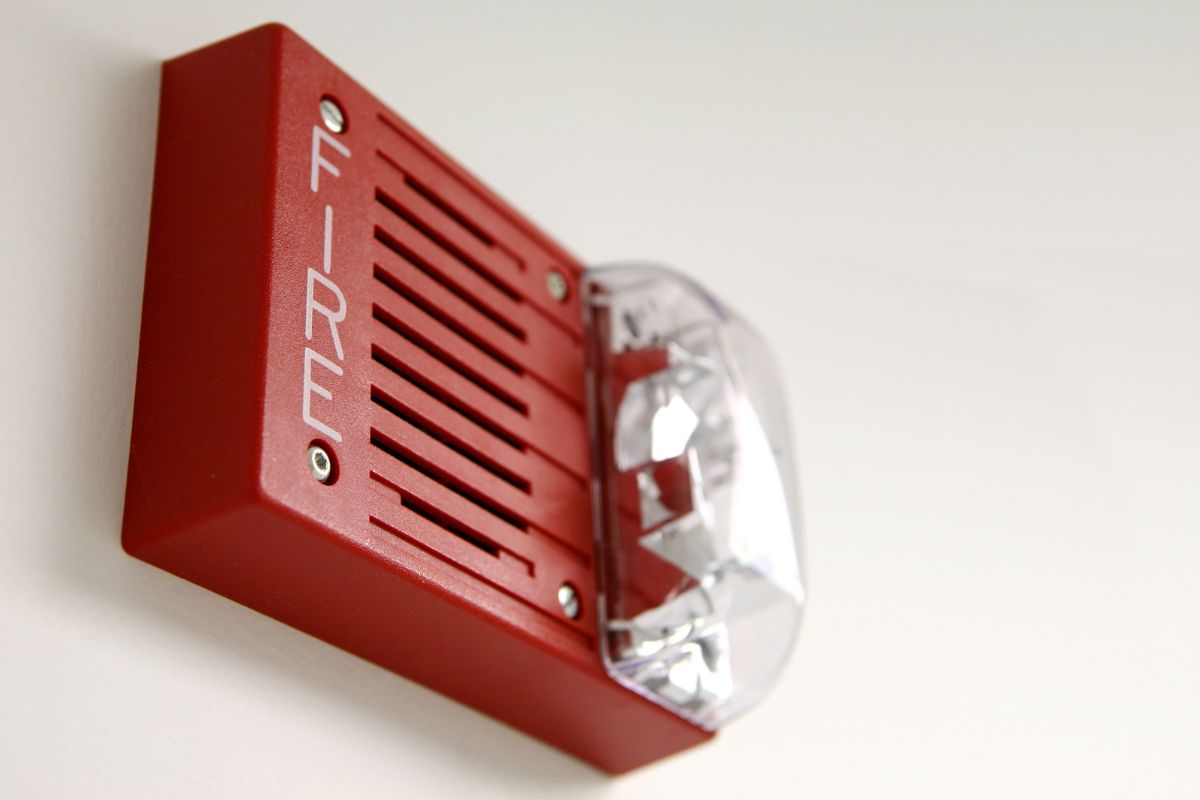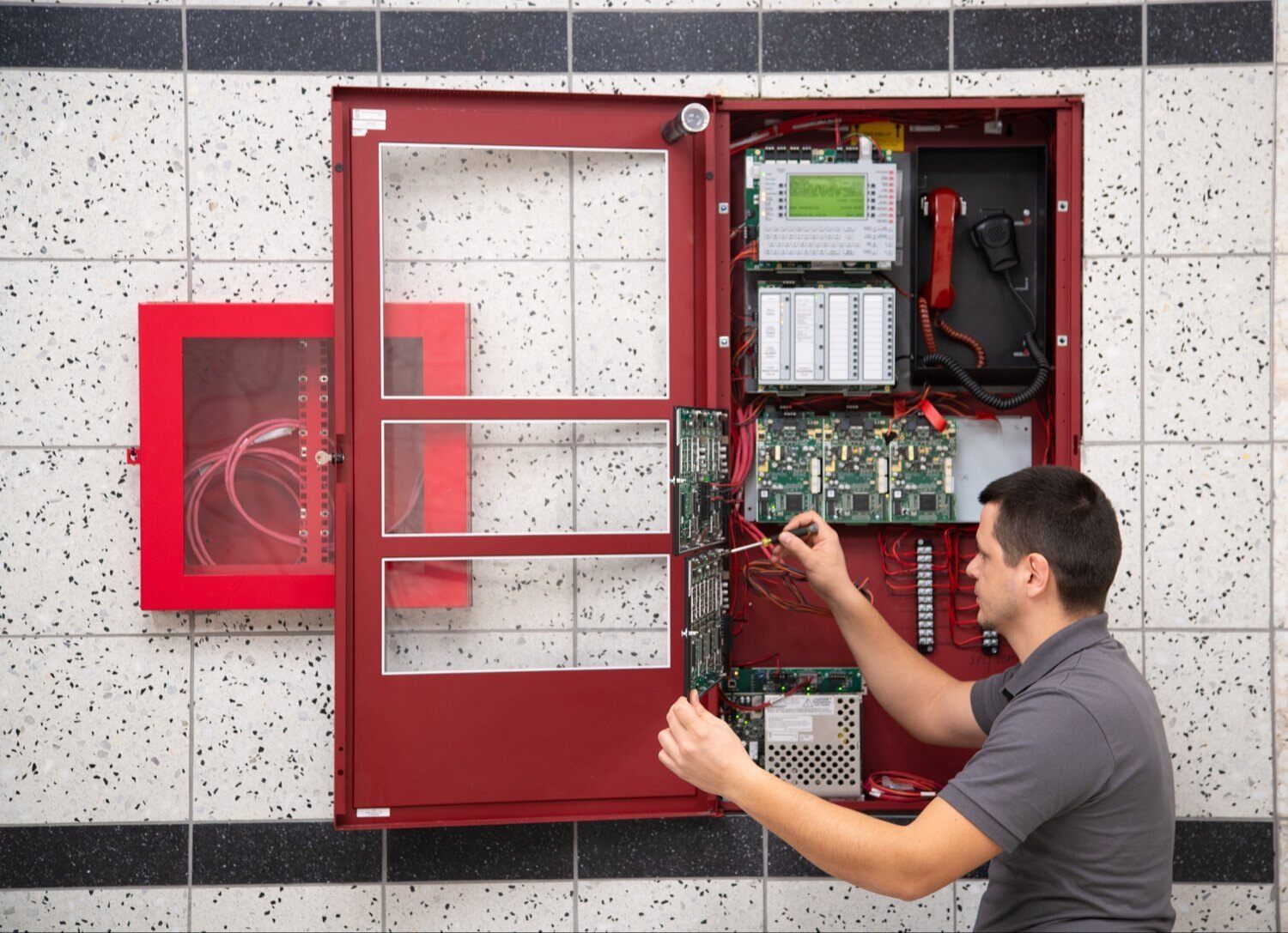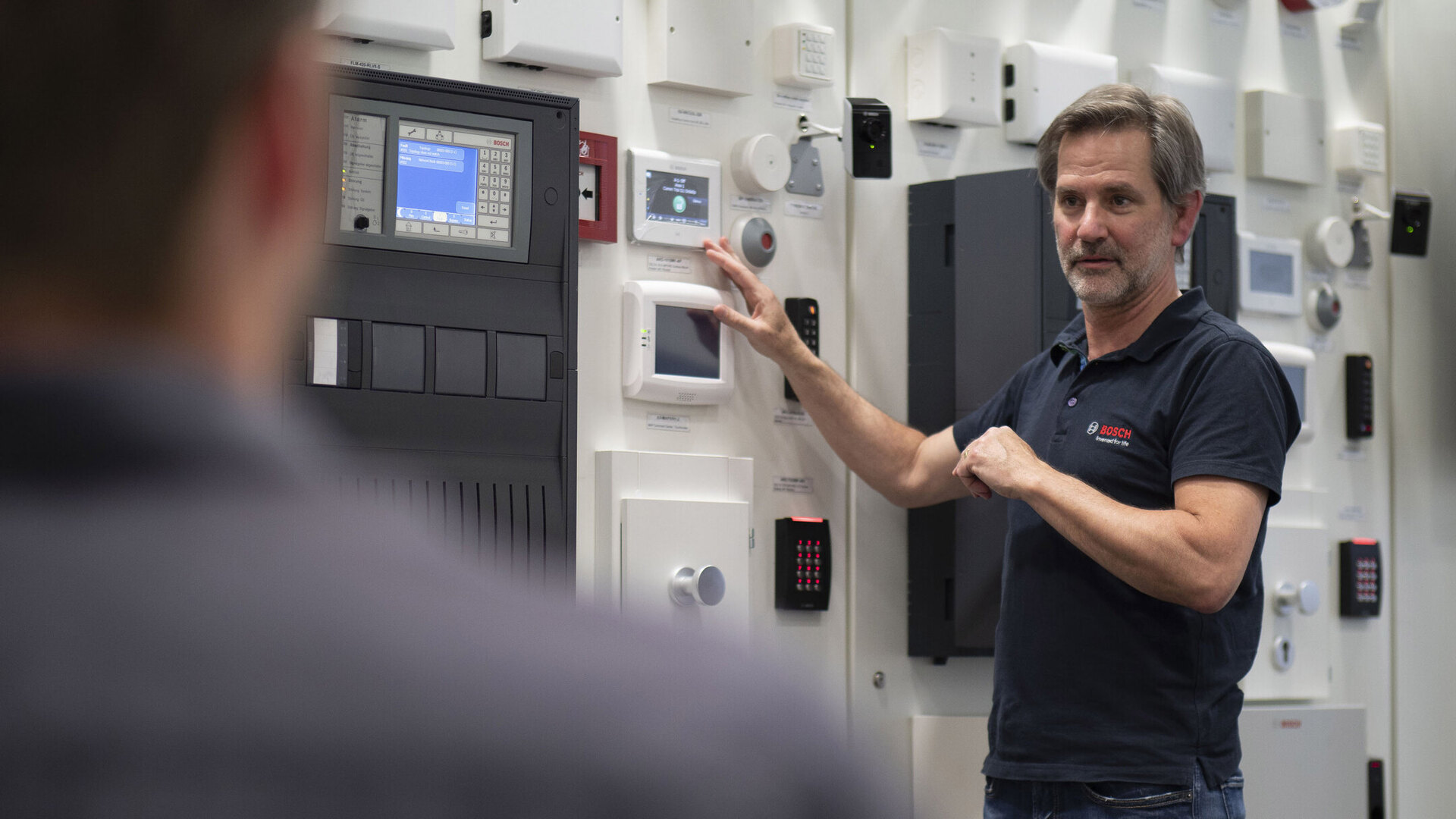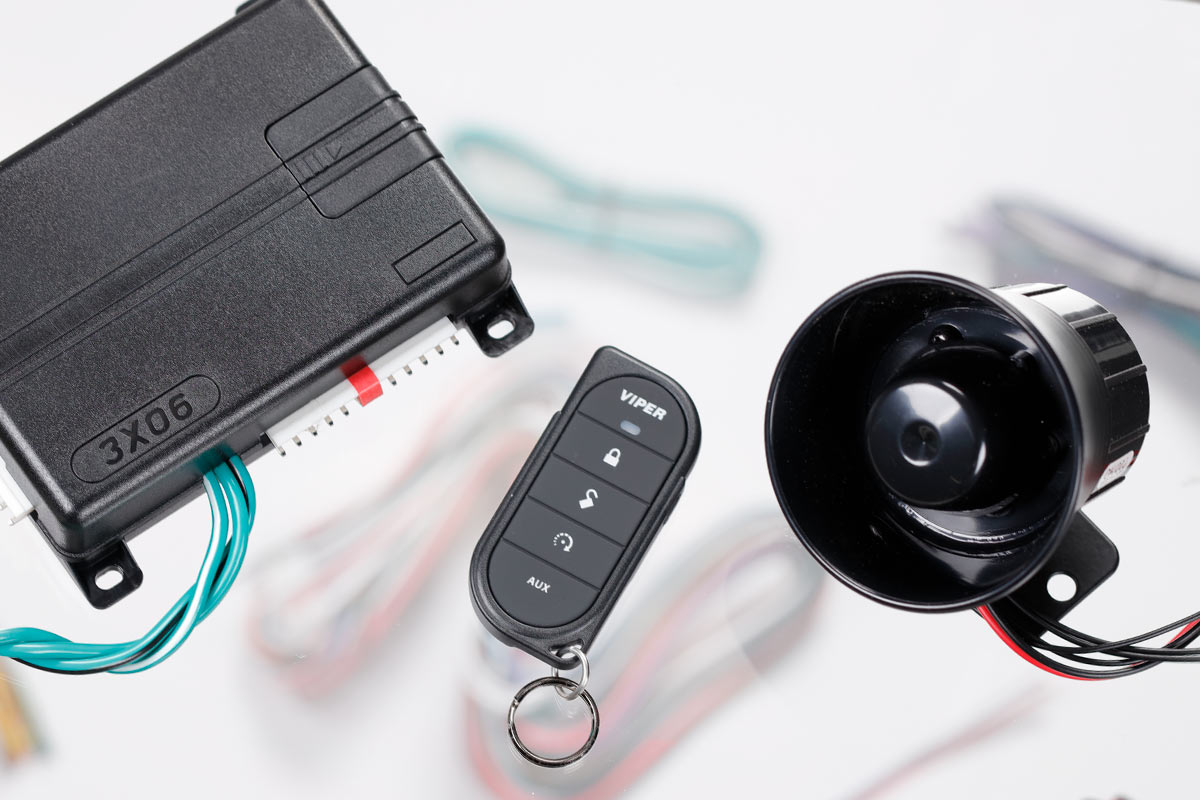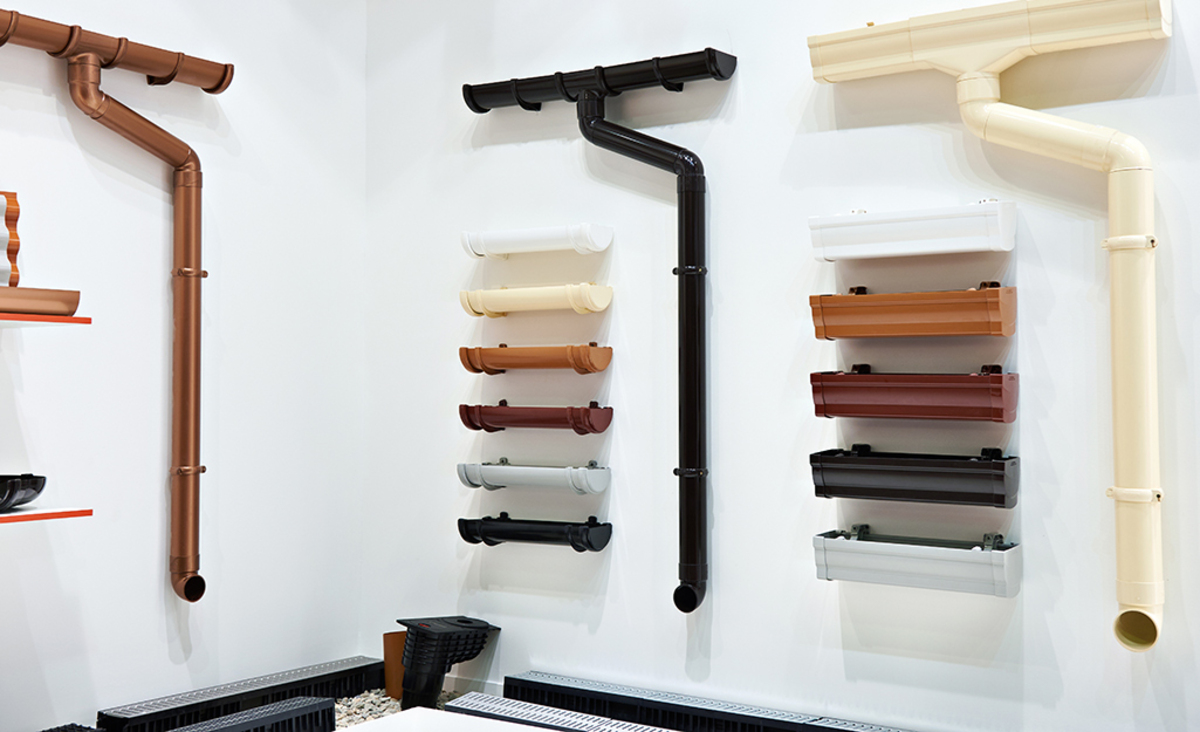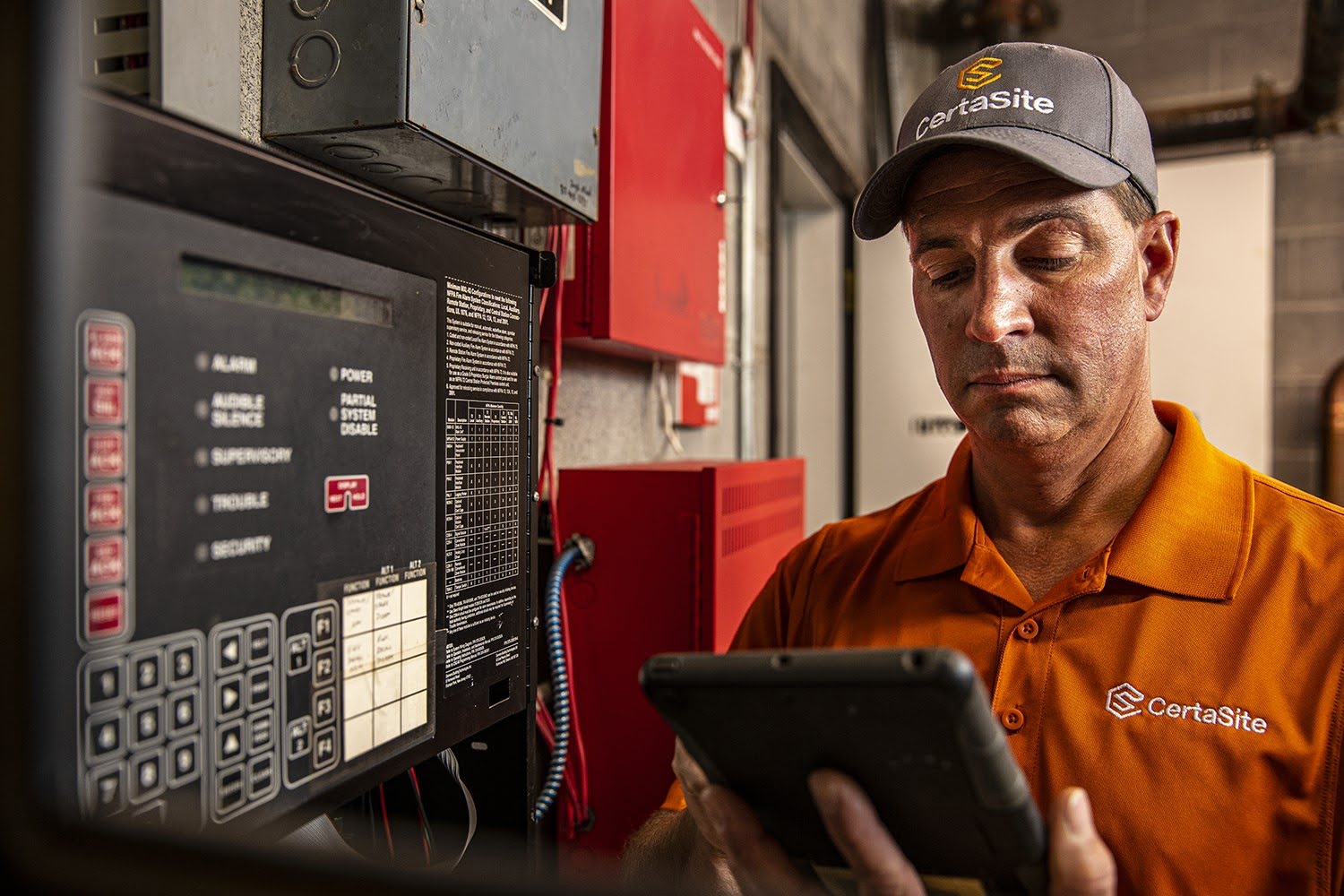Home>Home Security and Surveillance>What Are The Different Types Of Fire Alarm Systems
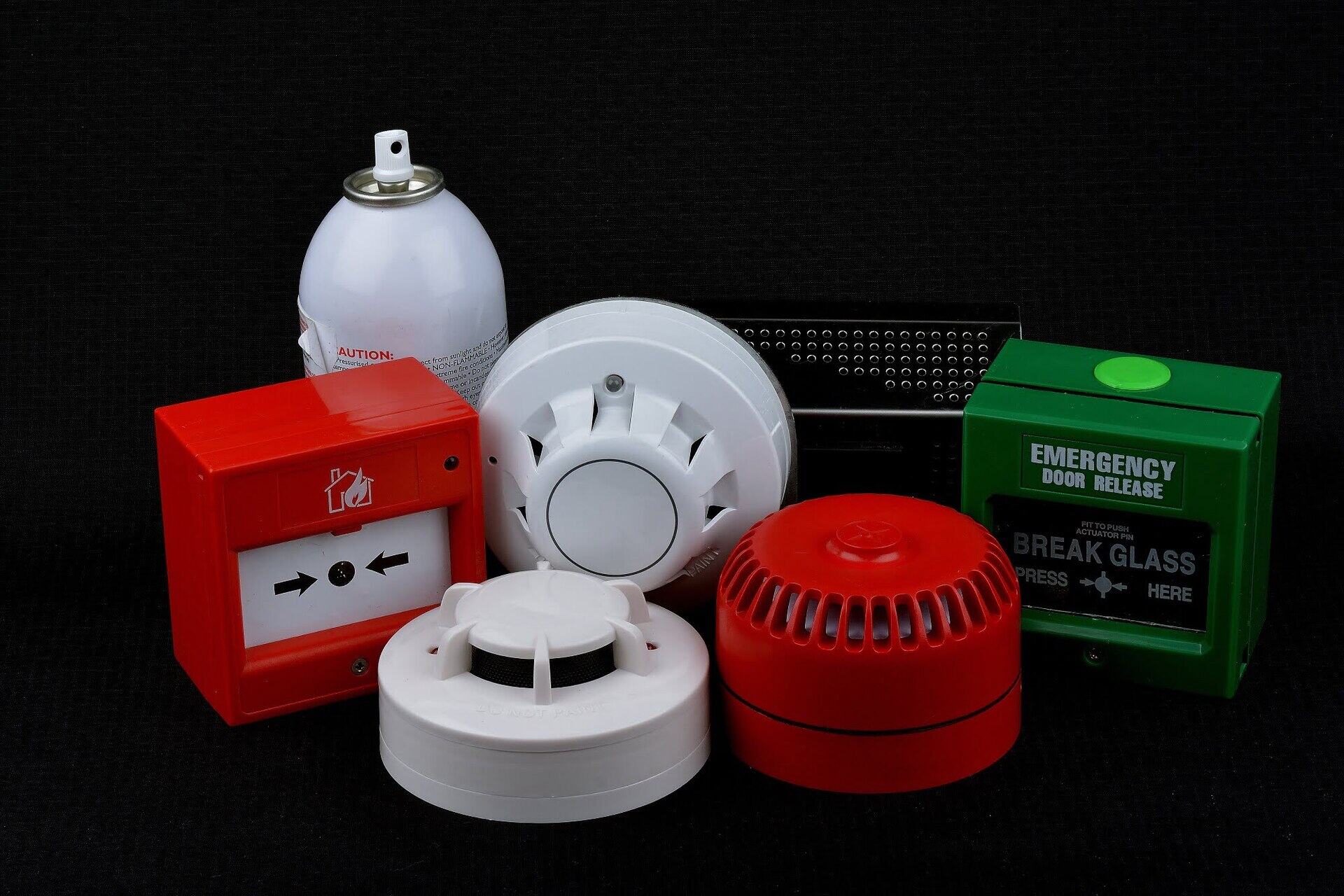

Home Security and Surveillance
What Are The Different Types Of Fire Alarm Systems
Modified: October 20, 2024
Learn about the various types of fire alarm systems for home security and surveillance, including smoke detectors, heat sensors, and carbon monoxide alarms. Protect your loved ones and property from potential fire hazards.
(Many of the links in this article redirect to a specific reviewed product. Your purchase of these products through affiliate links helps to generate commission for Storables.com, at no extra cost. Learn more)
Introduction
Welcome to the world of home security and surveillance! In today’s fast-paced and ever-evolving society, ensuring the safety and security of our homes has become a top priority. With advancements in technology and the increasing need for comprehensive systems, the market for home security and surveillance has expanded exponentially. In this article, we will explore the different types of fire alarm systems available to homeowners and how they can help protect your loved ones and property.
Installing a reliable fire alarm system is crucial in safeguarding your home against the devastating effects of fire. Fires can ignite suddenly, spreading rapidly and engulfing homes within minutes. By investing in a top-notch fire alarm system, you can minimize the risk of property damage and potential harm to yourself and your family members.
There are several types of fire alarm systems to choose from, each with its own unique features and benefits. Let’s delve into these systems and their functionalities:
Key Takeaways:
- Different fire alarm systems offer various features and benefits. Conventional systems are cost-effective, while addressable systems provide precise location identification. Analog systems offer continuous monitoring, and wireless systems are easy to install and flexible.
- Specialized systems like aspirating smoke detection, voice evacuation, flame detection, heat detection, and carbon monoxide detection cater to specific needs. Choosing the right system depends on building size, complexity, and budget.
Conventional Fire Alarm Systems
Conventional fire alarm systems have been a staple in the home security industry for many years. These systems are typically found in small to medium-sized buildings and are known for their simplicity and affordability. Conventional fire alarm systems are composed of a control panel, initiating devices, notification appliances, and wiring.
The control panel is the central hub of the system and receives signals from the initiating devices, such as smoke detectors or heat detectors, located throughout the building. When a device detects the presence of smoke or heat, it sends a signal to the control panel, which then activates the notification appliances, such as alarms or strobe lights, to alert occupants of a potential fire.
One of the main drawbacks of conventional fire alarm systems is their limited zone identification. These systems divide the building into different zones, and when an alarm is triggered, the control panel can only indicate which zone the alarm originated from. This makes it challenging to pinpoint the exact location of the fire.
Despite this limitation, conventional fire alarm systems remain a popular choice for residential applications due to their cost-effectiveness. They are relatively simple to install and maintain, making them a practical option for homeowners on a budget.
It is important to note that conventional fire alarm systems may not be suitable for larger or complex buildings. In such cases, more advanced systems, such as addressable or analog fire alarm systems, may be recommended to provide more precise information and greater functionality.
In summary, conventional fire alarm systems offer a basic level of fire detection and notification. While they may not have all the bells and whistles of more advanced systems, they are an affordable option for homeowners looking to enhance their home security and surveillance.
Addressable Fire Alarm Systems
An addressable fire alarm system is a more advanced and sophisticated option compared to conventional systems. These systems are designed to provide more precise information about the location of a fire within a building, making them ideal for larger and more complex structures.
Addressable fire alarm systems operate on a loop circuit, where each initiating device, such as smoke detectors or heat detectors, has a unique address. This address allows the control panel to identify the exact location of the device that triggered the alarm. This feature is crucial in emergency situations as it enables responders to quickly locate the source of the fire.
Another advantage of addressable fire alarm systems is their ability to provide detailed information about the status of each device connected to the system. The control panel can display information such as battery levels, device malfunctions, or maintenance requirements, allowing for prompt troubleshooting and maintenance.
In addition to precise identification, addressable fire alarm systems offer other advanced functionalities. These can include the ability to integrate with other security systems, such as CCTV cameras or access control systems, providing a comprehensive security solution for your home. Some systems can also support voice evacuation capabilities, where pre-recorded or live voice messages guide occupants to safety in the event of a fire.
While addressable fire alarm systems offer numerous advantages, it is important to note that they are generally more expensive than conventional systems. The complexity of installation and the need for specialized equipment contribute to the higher cost. However, for those seeking enhanced fire detection and accurate location identification, the investment in an addressable fire alarm system can provide invaluable peace of mind.
To summarize, addressable fire alarm systems offer advanced features such as precise location identification and detailed device status information. They are an excellent choice for larger buildings or those in need of more sophisticated fire detection capabilities. While they may come at a higher price point, the added benefits make them a worthwhile investment for homeowners prioritizing comprehensive home security.
Analog Fire Alarm Systems
Analog fire alarm systems represent a modern and flexible approach to fire detection and notification. These systems utilize advanced technology to provide highly accurate and reliable monitoring of fire hazards within a building.
Unlike conventional or addressable systems, analog fire alarm systems do not rely on simple on/off signals. Instead, they utilize sensors that constantly monitor the environment for changes in temperature, smoke, or other fire-related factors. These sensors provide continuous data, allowing the system to analyze and interpret the level of risk present.
One of the key advantages of analog fire alarm systems is their ability to provide early warning detection. By constantly monitoring the environment, the system can detect subtle changes in heat or smoke patterns, enabling early detection of potential fire hazards. This is particularly important in scenarios where fires can develop rapidly, such as in high-risk areas or buildings with high occupancy.
Another notable feature of analog fire alarm systems is their capability to differentiate between various levels of fire hazards. These systems can provide multiple alarm thresholds, allowing for a more customized response based on the severity of the detected hazard. This feature can significantly reduce false alarms and provide a more accurate response to real fire situations.
Additionally, analog fire alarm systems often come equipped with advanced notification options. These can include audible alarms, visual strobe lights, text messages, or even automated phone calls to alert building occupants and emergency responders. The flexibility of these systems ensures that alerts are delivered in a format that is most effective for a given situation.
While analog fire alarm systems offer advanced features and enhanced detection capabilities, they tend to be more expensive than conventional or addressable systems. The complex technology involved in continuous monitoring and analysis contributes to the higher cost. However, for buildings where rapid fire detection and precise warning are essential, the investment in an analog fire alarm system is crucial.
In summary, analog fire alarm systems provide continuous monitoring and early warning detection of fire hazards. They offer multiple alarm thresholds and flexible notification options, making them ideal for high-risk areas or buildings with complex fire detection needs. Although they may be more costly, the advanced features and enhanced safety benefits make them a worthwhile investment for homeowners seeking top-notch fire protection.
Wireless Fire Alarm Systems
Wireless fire alarm systems have revolutionized the way fire detection and notification is implemented in both residential and commercial settings. As the name suggests, these systems operate wirelessly, eliminating the need for extensive wiring installations.
One of the key benefits of wireless fire alarm systems is their ease of installation. Without the need to run wires throughout the building, the installation process is significantly simplified and can be completed in a shorter timeframe. This makes wireless systems ideal for retrofitting existing structures or for buildings where running wires is challenging or not feasible.
In addition to easy installation, wireless fire alarm systems offer excellent flexibility and scalability. The wireless devices, including smoke detectors, heat detectors, and control panels, can be easily added or relocated as needed. This adaptability allows homeowners to modify the system to accommodate changes in the building layout or to expand the coverage area without the hassle of rewiring.
Wireless fire alarm systems also excel in their reliable communication capabilities. Utilizing wireless technology, the devices can effectively transmit data and alarm signals to the control panel, ensuring prompt and accurate response to fire events. The wireless communication also minimizes the risk of physical tampering or damage to the system, enhancing its security and dependability.
It is worth noting that wireless fire alarm systems operate on batteries, which require regular maintenance and replacement. Battery life can vary depending on the type of devices and the usage pattern, so it’s essential to monitor battery levels and replace them as needed to maintain the system’s functionality.
While wireless fire alarm systems offer numerous advantages, there are a few considerations to keep in mind. As with any wireless technology, the signal range may be limited, especially in buildings with thick walls or complex layouts. It is crucial to assess the signal coverage and ensure that all areas are adequately protected. Additionally, wireless systems may be more vulnerable to interference, so proper security measures should be implemented to protect against signal jamming or unauthorized access.
In summary, wireless fire alarm systems provide easy installation, flexibility, and reliable communication capabilities. They are an excellent choice for buildings where wired systems are not practical or difficult to install. While they require regular battery maintenance and may have limitations in signal range, their wireless technology offers convenience and adaptability in enhancing the overall fire safety of your home.
Hybrid Fire Alarm Systems
Hybrid fire alarm systems combine the best of both worlds by integrating the features of conventional and addressable fire alarm systems. These systems are designed to provide flexibility, scalability, and precise fire detection capabilities.
The hybrid system utilizes a combination of conventional and addressable devices, allowing for customized and cost-effective fire protection solutions. Conventional devices are typically used in areas where basic detection is sufficient, while addressable devices are deployed in critical or high-risk areas that require more advanced fire detection and location identification.
One of the key advantages of hybrid fire alarm systems is their flexibility in system design and installation. Since the system incorporates both conventional and addressable devices, it can be tailored to meet specific fire safety requirements for different areas of a building. This flexibility is particularly valuable in complex structures or buildings with varying levels of fire risk.
Another benefit of hybrid systems is their scalability. As the needs of a building change or expand, additional addressable devices can be easily incorporated into the system without the need for significant modifications. This allows the system to grow alongside the building, ensuring continuous and comprehensive fire protection.
Hybrid fire alarm systems also provide the advantage of precise location identification. The addressable devices integrated into the system allow for accurate identification of the source of a fire, helping emergency responders to navigate and respond effectively. This can significantly reduce response time and mitigate potential damages in critical situations.
Furthermore, hybrid systems often offer advanced features such as integration with other security systems. This can include linking to CCTV cameras, access control systems, or building management systems, creating a fully integrated security solution for the building.
It is important to note that hybrid fire alarm systems may come at a higher cost compared to conventional systems due to the inclusion of addressable devices and the advanced functionalities they offer. Additionally, proper planning and design are essential to ensure seamless integration and optimal performance of the hybrid system.
In summary, hybrid fire alarm systems provide the flexibility, scalability, and precise fire detection capabilities of both conventional and addressable systems. They offer a customized and cost-effective solution for buildings with varying fire safety needs. While they may be higher in cost and require careful planning, their ability to adapt to changing requirements makes them an excellent choice for comprehensive fire protection.
Regular maintenance and testing of fire alarm systems is crucial to ensure they are functioning properly in case of an emergency. Make sure to schedule regular inspections and testing with a qualified technician.
Aspirating Smoke Detection Systems
Aspirating smoke detection systems, also known as air sampling systems, offer a highly sensitive and early detection method for smoke and fire hazards. These systems work by actively drawing air samples from the environment and analyzing them for the presence of smoke particles.
Unlike traditional smoke detectors that rely on the detection of smoke particles directly in their vicinity, aspirating smoke detection systems can cover larger areas and detect smoke at its earliest stages. The system uses a network of sampling pipes or tubes to collect air samples from different zones of the building. These samples are then analyzed by a highly sensitive detector unit, which can identify even minuscule amounts of smoke particles.
One of the key advantages of aspirating smoke detection systems is their ability to provide continuous and early detection. The system can detect the presence of smoke particles at a very early stage, even before they are visible or can trigger conventional smoke detectors. This early warning allows for rapid response and mitigation of potential fire hazards.
Another benefit of these systems is their ability to pinpoint the exact location of a fire within a building. By utilizing multiple sampling points and sophisticated algorithms, aspirating smoke detection systems can accurately identify the origin of the smoke, facilitating quicker response and evacuation procedures.
Furthermore, aspirating smoke detection systems are highly adaptable to different environments and can be customized to meet specific requirements. The sensitivity settings can be adjusted to suit the unique conditions of each area, ensuring optimal detection performance and minimizing the risk of false alarms.
It is important to note that aspirating smoke detection systems require regular maintenance and cleaning to ensure proper functionality. The sampling pipes or tubes can accumulate dust or debris over time, which may affect the accuracy of the system. Regular inspections and cleaning are necessary to maintain the system’s sensitivity and reliability.
In summary, aspirating smoke detection systems provide highly sensitive and early detection of smoke particles. They offer continuous monitoring, precise location identification, and the ability to customize sensitivity settings to suit specific environments. While they require regular maintenance, their advanced detection capabilities make them an excellent choice for areas where early detection is critical, such as data centers, museums, or other high-value spaces.
Voice Evacuation Systems
Voice evacuation systems, also known as voice alarm systems, play a vital role in emergency situations by providing clear and intelligible voice instructions to occupants during a fire or other hazardous event. These systems are designed to enhance the effectiveness of emergency evacuation procedures and ensure the safety of building occupants.
Unlike traditional fire alarm systems that rely on alarm bells or sirens, voice evacuation systems utilize pre-recorded or live voice messages to guide occupants to safety. This human voice element adds an extra layer of reassurance and clarity in emergency situations, helping to reduce panic and confusion.
Voice evacuation systems are typically integrated with fire alarm systems and other emergency detection devices. When a fire alarm or other emergency signal is triggered, the system automatically activates the voice messages, which are broadcasted through speakers strategically placed throughout the building.
One of the key advantages of voice evacuation systems is their ability to provide specific and detailed instructions tailored to the nature of the emergency. The pre-recorded or live voice messages can direct occupants to safe exit routes, provide instructions on using fire suppression equipment, or relay important information about the status of the emergency situation.
Furthermore, voice evacuation systems can be programmed to provide different messages for different areas or zones within a building. This allows for targeted and efficient evacuation procedures, ensuring that occupants receive the most relevant and accurate information based on their location.
In addition to emergency evacuation purposes, voice evacuation systems can also be used for general public address announcements. These systems can be integrated with other building systems, such as intercoms or background music systems, providing a versatile communication solution for everyday use.
It is important to regularly test and maintain voice evacuation systems to ensure their proper functionality. Regular inspections and checks on speakers, amplifiers, and control panels are crucial to ensure that the system is ready for use in emergency situations.
In summary, voice evacuation systems provide clear and intelligible voice instructions to guide occupants during emergencies. They enhance communication, reduce panic, and improve the efficiency of evacuation procedures. When integrated with other building systems, they offer versatile communication capabilities beyond emergency situations.
Flame Detection Systems
Flame detection systems play a vital role in fire safety by providing early and reliable detection of open flames. These systems are specifically designed to identify the presence of flames in various environments, allowing for immediate response and mitigation of fire hazards.
Flame detection systems utilize advanced technologies to detect the characteristics of flames, such as their unique patterns of light and heat emissions. The systems are equipped with specialized sensors that can perceive these distinct flame signatures, even in challenging conditions or environments with high background noise or other sources of light.
One of the key advantages of flame detection systems is their ability to offer rapid detection of fires at their inception phase. By identifying flames in their early stages, the systems enable prompt action, such as activating fire suppression systems or initiating evacuation procedures, to prevent the fire from spreading and causing significant damage.
Flame detection systems are highly reliable and accurate in their detection capabilities. They are less susceptible to false alarms caused by non-fire related sources, such as dust or steam, compared to traditional smoke detectors. This reduces the risk of unnecessary evacuations and ensures that the system responds specifically to genuine fire threats.
These systems are often employed in high-risk or specialized environments where the presence of open flames can lead to catastrophic consequences. Examples of such environments include chemical plants, refineries, power generation facilities, and other industrial settings where combustible materials are present. Flame detection systems are also used in outdoor applications, such as fuel storage areas, where traditional smoke detectors may not be suitable due to wind or other environmental factors.
It is essential to properly maintain and regularly test flame detection systems to ensure their effectiveness. Regular inspections and cleaning of the sensors and lenses are necessary to prevent obstructions that may hinder their performance. Additionally, periodic calibration and testing of the system are vital to verify its accuracy and reliability.
In summary, flame detection systems provide early and reliable detection of open flames, allowing for immediate response to fire hazards. They offer rapid and accurate alarm activation, reducing the risk of false alarms and ensuring an appropriate and targeted response. These systems are crucial in high-risk environments where the presence of open flames can lead to severe consequences.
Heat Detection Systems
Heat detection systems play a crucial role in fire safety by providing early detection of fire through the sensing of rising temperatures. These systems are designed to identify and alert occupants to the presence of fire based on changes in the surrounding heat levels.
Heat detection systems are particularly effective in environments where the use of smoke detectors may not be suitable, such as areas with high levels of dust, steam, or other airborne particles that could trigger false alarms. Unlike smoke detectors that rely on the presence of smoke particles, heat detection systems monitor for rapid increases in temperature as an indicator of fire.
There are two main types of heat detection systems: fixed temperature detectors and rate-of-rise detectors.
Fixed temperature detectors are set to trigger an alarm when the temperature reaches a pre-determined threshold. Once the temperature surpasses this threshold, the system activates an alarm, alerting occupants to the presence of fire. Fixed temperature detectors are especially useful in areas where rapid changes in temperature are unlikely, such as storage rooms or boiler rooms.
On the other hand, rate-of-rise detectors are designed to detect rapid increases in temperature rather than a fixed threshold. These detectors monitor the rate at which the temperature changes and trigger an alarm if it exceeds a predetermined value within a certain timeframe. Rate-of-rise detectors are commonly used in environments where fires can develop quickly, such as kitchens or areas with highly flammable materials.
One of the key advantages of heat detection systems is their reliability and stability. They are less prone to false alarms caused by non-fire related sources like cooking smoke, dust, or steam. Heat detection systems are also effective in environments with poor air quality, high humidity, or extreme temperatures, where traditional smoke detectors may not function optimally.
Proper installation, maintenance, and regular testing are essential for the effective operation of heat detection systems. It is important to ensure that the detectors are placed strategically, taking into consideration the layout and characteristics of the area being monitored. Regular inspection and cleaning of the detectors are necessary to prevent obstructions and maintain accuracy.
In summary, heat detection systems provide early detection of fire by monitoring changes in temperature. They offer reliable and stable fire detection, making them particularly suitable for environments where the use of smoke detectors may not be practical or lead to false alarms. By detecting rising temperatures, heat detection systems contribute to early fire response and enhance overall fire safety.
Carbon Monoxide Detection Systems
Carbon monoxide (CO) detection systems are crucial in ensuring the safety of homes and buildings by detecting the presence of this odorless, colorless, and highly toxic gas. Carbon monoxide is produced by the incomplete combustion of fossil fuels such as natural gas, propane, gasoline, and wood.
Carbon monoxide can be deadly, as it replaces oxygen in the bloodstream, leading to severe health complications or even death if not detected and addressed promptly. Carbon monoxide detection systems are designed to continuously monitor the levels of CO in the air and trigger an alarm when concentrations reach hazardous levels.
Carbon monoxide detectors are typically equipped with electrochemical sensors that detect and measure the amount of CO in the surrounding environment. These sensors are highly sensitive to low levels of carbon monoxide, allowing for early detection and timely alerting of occupants.
One of the key advantages of carbon monoxide detection systems is their ability to provide early warning signs of CO buildup, ensuring prompt evacuation and necessary actions to mitigate the risks. By activating an audible and visual alarm, occupants can promptly evacuate the premises and seek fresh air, reducing the potential for CO poisoning.
Additionally, carbon monoxide detection systems can be integrated with home automation systems or smart devices, providing remote notifications and alerts to homeowners. This allows homeowners to take immediate action, even when they are away from the property, by contacting emergency services or shutting off fuel sources that may be contributing to CO buildup.
It is crucial to install carbon monoxide detectors strategically throughout the home or building, particularly in areas where fuel-burning appliances are present, such as the kitchen, furnace rooms, or garages. Regular testing and maintenance are vital to ensure the detectors are functioning correctly and the sensors remain accurate.
Furthermore, it is important to note that carbon monoxide detectors have a limited lifespan and should be replaced as recommended by the manufacturer, typically every 5-7 years. It is also essential to have fuel-burning appliances inspected and serviced regularly to minimize the risk of carbon monoxide leakage.
In summary, carbon monoxide detection systems provide early warning and alert occupants to the presence of this hazardous gas. They offer critical protection against carbon monoxide poisoning and can be integrated with smart home systems for remote monitoring and notifications. By detecting and alerting occupants to dangerous levels of carbon monoxide, these systems play a crucial role in maintaining a safe and healthy environment.
Conclusion
Home security and surveillance are paramount in protecting our loved ones and property. Fire alarm systems are an essential component of any comprehensive home security system, providing early detection and prompt response to fire hazards. In this article, we explored different types of fire alarm systems and their functionalities, including conventional, addressable, analog, wireless, hybrid, aspirating smoke detection, voice evacuation, flame detection, heat detection, and carbon monoxide detection systems.
Conventional fire alarm systems offer a cost-effective solution with basic fire detection and notification capabilities. Addressable fire alarm systems provide precise location identification and enhanced functionality, making them suitable for larger or more complex buildings. Analog fire alarm systems offer continuous and early detection of fires, adaptive sensitivity, and can be integrated with other security systems.
Wireless fire alarm systems offer easy installation, flexibility, and scalability, making them ideal for retrofitting or buildings where running wires is challenging. Hybrid fire alarm systems combine the features of conventional and addressable systems, providing customizability and scalability for different fire safety needs.
Aspirating smoke detection systems offer highly sensitive and early detection by actively sampling air for smoke particles, making them suitable for high-value spaces or areas with particular fire detection needs. Voice evacuation systems utilize clear voice instructions to guide occupants during emergencies, enhancing communication and expediting evacuation procedures.
Flame detection systems excel in the early detection of open flames, providing crucial rapid response capabilities in high-risk environments. Heat detection systems ensure early detection even where the use of smoke detectors may not be suitable, such as areas with high levels of dust or steam. Carbon monoxide detection systems play a vital role in detecting the presence of this toxic gas, preventing CO poisoning and providing peace of mind.
In conclusion, selecting the right fire alarm system for your home depends on various factors such as building size, complexity, specific fire safety needs, and budget. It is essential to consider these factors and consult with professionals to determine the most suitable solution. By investing in a reliable and effective fire alarm system, you can protect your home and loved ones from the devastating effects of fire and ensure a safe and secure living environment.
Frequently Asked Questions about What Are The Different Types Of Fire Alarm Systems
Was this page helpful?
At Storables.com, we guarantee accurate and reliable information. Our content, validated by Expert Board Contributors, is crafted following stringent Editorial Policies. We're committed to providing you with well-researched, expert-backed insights for all your informational needs.

